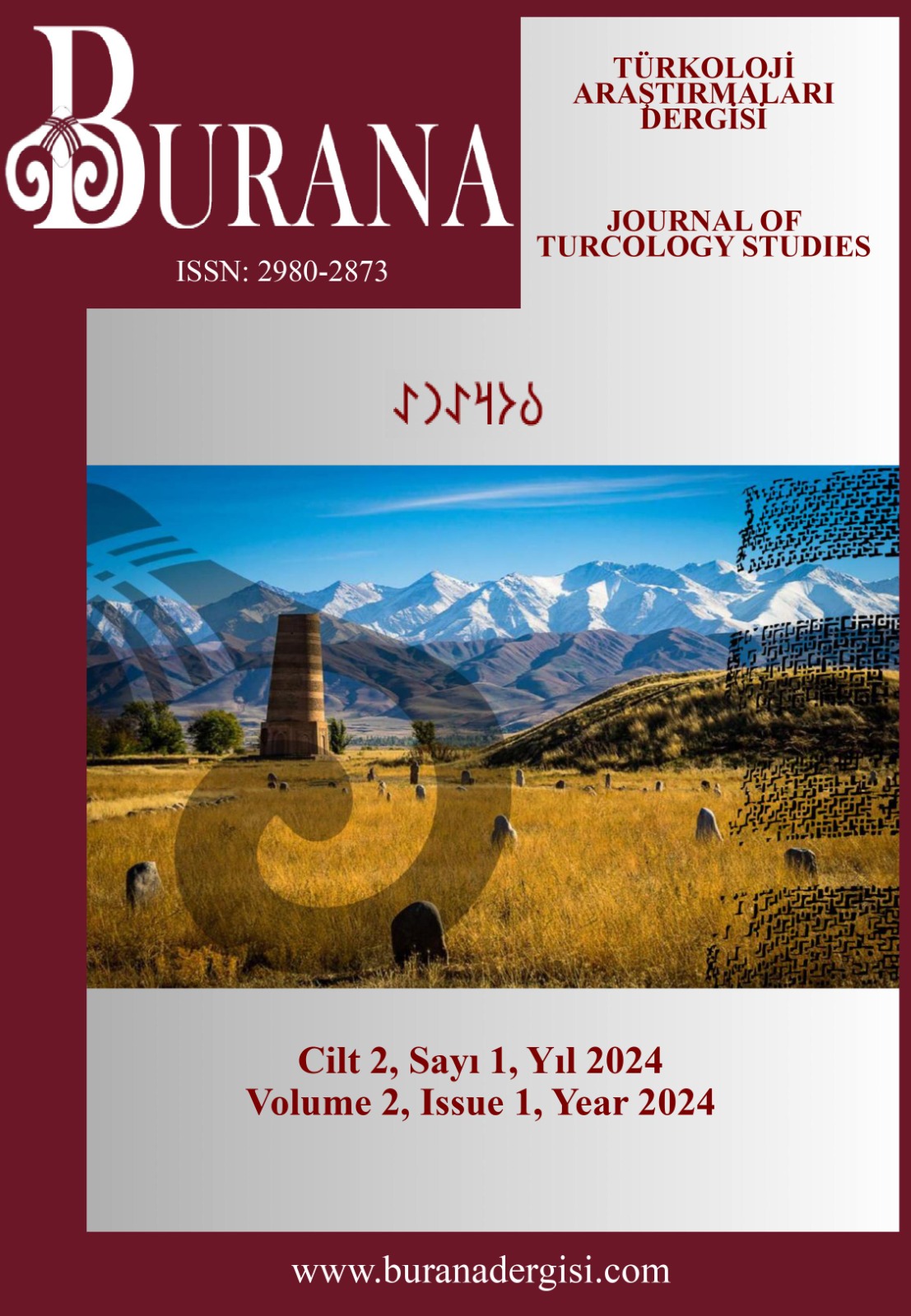Historical and Comparative Analysis of Some Words in the Work of Kurbanghali Khalidi Tawarikh-i Khamsa-i Sharqi
DOI:
https://doi.org/10.5281/zenodo.12627001Abstract
This work, which was started to be written by Kurbangali Halidi in 1889, was written in Common Turk language and completed in 1910. The work was printed in 1910 at the Ornek printing house in Kazan. The author wrote the history of Kazakh, Tatar, Mongolian, Turkish and Chinese peoples by using sources written in Arabic, Persian, Turkish, Mongolian and Chinese. This work consists of 10 chapters. Khalidi created this work based on the Chagatai written heritage, which intellectuals and scholars of the Turkic community sought to establish in accordance with the requirements of his time, using the “common Turkish language”, Tatar, Uzbek, Uyghur, Kazakh, Kyrgyz, Kyrymchak languages, and using the scientific literature of Arabic and Persian languages, he used the terms as freely as possible. While writing this work, the author also benefited from the books of Russian researchers W. Radloff, A. Wambery and H. Katanov. In addition, one of Kurbangali Halidi's greatest characteristics is that, when writing about a subject, he tries to explain the subject by making use of all the sources at his disposal. While Kurbangali Halidi was writing his work called Tawarikh-i khamsa-i sharqi, he also benefited from such manuscripts as Tibyan-ı Nafik, Cihan-nüma, Kaide-yi Özbekiyye, Gıyas'ul-Luğat, Şecere-i Türki, Tarih-i Taberi, Hayrullah, as well as many unknown manuscripts. In his work titled Tawarikh-i khamsa-i sharqi, the author deals with Huns, Karakhanids, Golden Horde, Kök Orda, Ak Orda, Kazakh khans, Djungar invasion, Kokand Khanate and its khans, Kazakh parts, Kipchaks, Kyrgyz, Noghais, Bashkirs, Mongolian Khanate, Ilkhans. It talks about the history and genealogies of the sultans of the Ottoman Empire. In addition, the author also provides extensive information about the formation period of the people of Western China and East Turkestan in his work. In this part, the author starts the history from the Karakhanids and talks about the history of Sultan Sıddık Buğra Khan, Alparslan Khan, Tuğluk Timur Khan, Afak Hodja and his sons, respectively. This work by the author is a unique example for researchers of Central Asian Turkish history. The study was written to explain the meanings of the old terms in the mentioned book, how they are used today, and to compare their meanings in Kazakh and Turkish, if they exist in Turkish.
References
Budagov, L. Z. (1869). Svarnitelnıy slovar turetsko-tatarskih nareçiy. Tipografiya İmperatorskoy Akademii Nauk.
Budagov, L. Z. (1871). Svarnitelnıy slovar Turetsko-Tatarskih nareçiy. Tipografiya İmperatorskoy Akademii Nauk.
Çağbayır, Y. (2007). Türkçe sözlük. Ötüken.
Gencal, B. (2013). XIX. yüzyıl Doğu Türkistan tarihi hakkında yazılmış olan birinci elden kaynaklar. Manas Sosyal Araştırmalar Dergisi, 2(8), 17-30.
Halidi, K. (1910). Tarih-i hamse-i şarki. Örnek.
Kaşgari, M. (1997). Türiik tilin sözdigi: (Diuani lugat et-Türk). Hant.
Nadelyayev V. M. (1969). Drevnetyurskiy slovar. Nauka.
Toparlı R. vd. (2007). Kıpçak Türkçesi sözlüğü. Türk Dil Kurumu.
URL-1: 2024 jılgı 1 mamır küni https://sozluk.gov.tr/ saytınan alıngan.
URL-2: 2024 jılgı 1 mamır küni http://www.osmanlicaturkce.com/ saytınan alıngan.
URL-3: 2024 jılgı 1 mamır küni http://www.lugatim.com/ saytınan alıngan.
URL-4: 2024 jılgı 1 mamır küni https://www.nisanyansozluk.com/ saytınan alıngan.
URL-5: 2024 jılgı 1 mamır küni https://islamansiklopedisi.org.tr/ saytınan alıngan.
URL-6: 2024 jılgı 1 mamır küni https://sozdik.kz/ saytınan alıngan.
Downloads
Published
How to Cite
Issue
Section
License
Copyright (c) 2024 BURANA - Journal of Turcology Studies

This work is licensed under a Creative Commons Attribution 4.0 International License.


